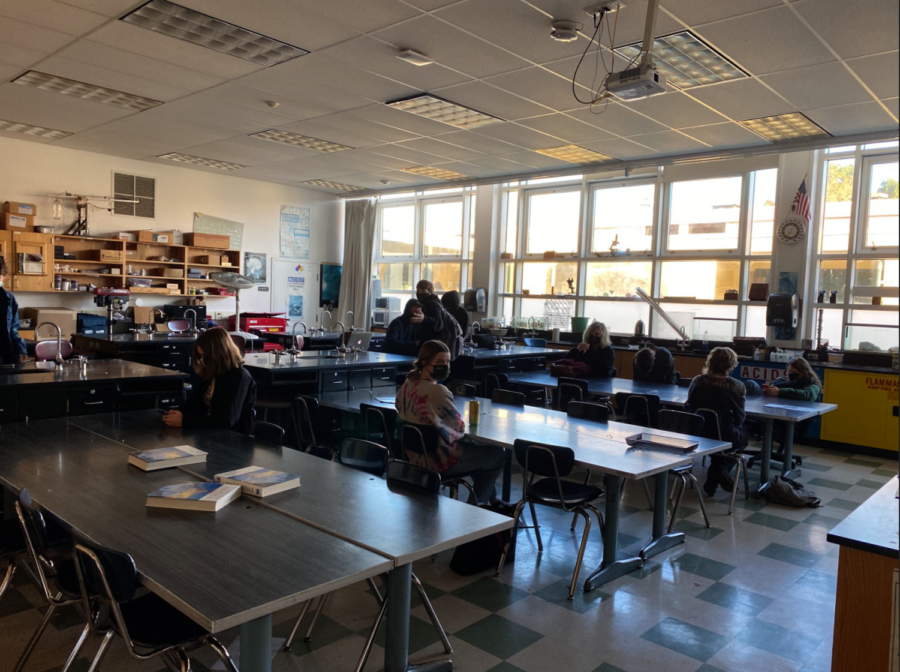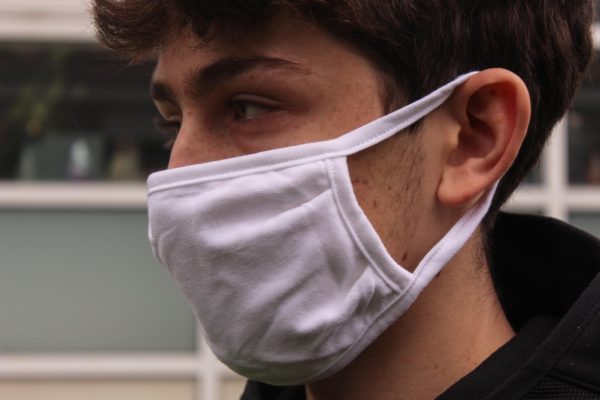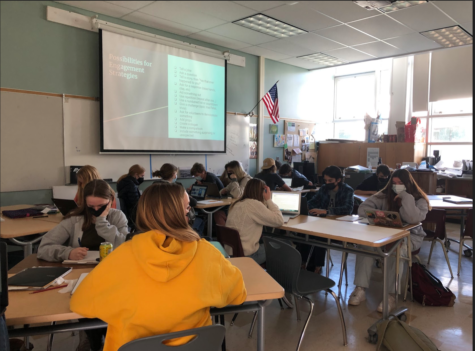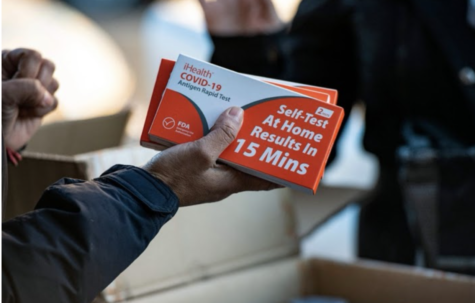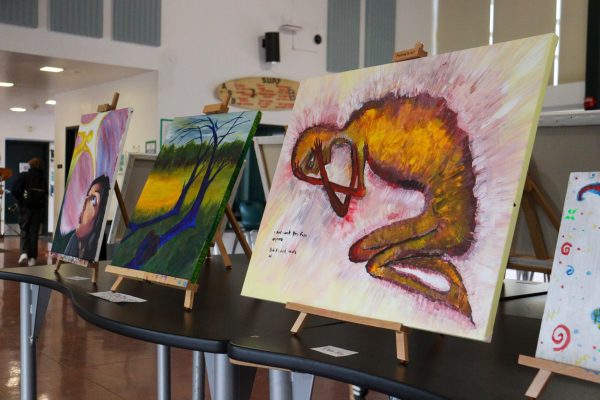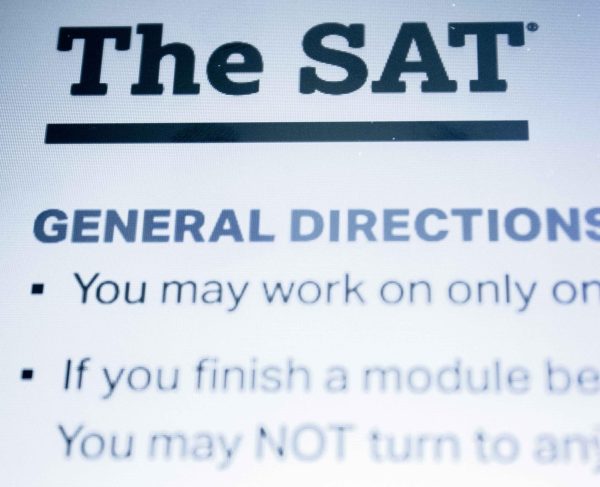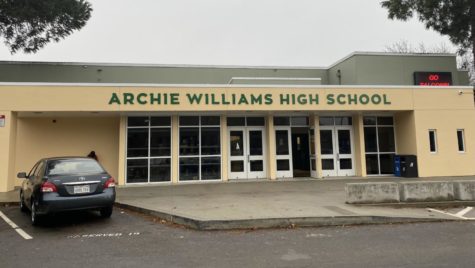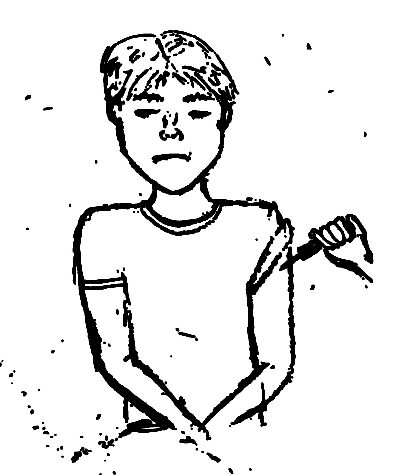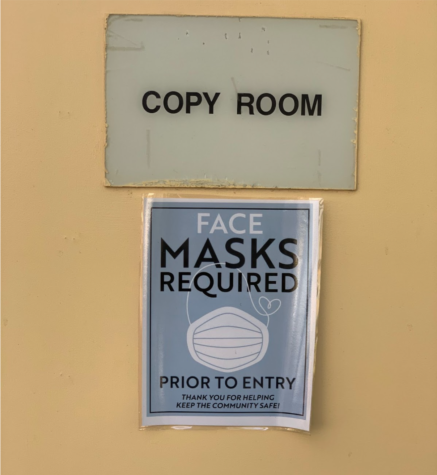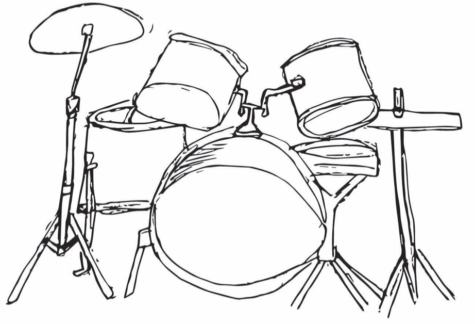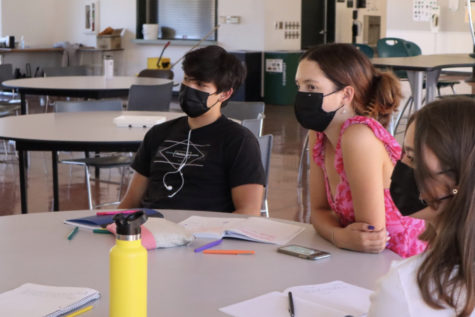When and when not to attend in-person school during a COVID-19 surge
AWHS science teacher, Barton Clark’s living earth class, absent of multiple students as some are out due to COVID-19 protocol.
ALL GUIDELINES ARE AS OF JAN. 19
Although AWHS students and faculty are regularly exposed to COVID-19, safety guidelines have changed from when the school first opened back up in spring 2021. Determined by the Marin County Public Health Department (Marin HHS), AWHS COVID-19 guidelines are ever-changing, making it difficult for community members to know when it is safe to attend in-person classes after being exposed to COVID-19.
AWHS uses the Isolation and Quarantine Guide made by Marin HHS to navigate its response to COVID-19. The rapid changes in guidelines have puzzled AWHS faculty, like Assistant Principal Nate Severin, when trying to update the AWHS community on COVID-19 safety guidelines.
“My job is not to decide what makes sense or not, I just follow the county health department. These [guidelines] are always changing which makes it complicated,” Severin said.
AWHS COVID-19 safety protocols for asymptomatic or COVID-19 positive students are present, but less stringent compared to last year.
“Last school year, up until this winter break, if you were a close contact [for COVID-19 tracing], it was a lot of work to individually identify and contact trace. Now, that’s not the case, you can still come to school as long as you’re wearing a mask and not symptomatic. That’s also why we started offering testing more,” Severin said.
Now, fully vaccinated students and staff that are exposed to COVID-19 and are asymptomatic are permitted to attend in-person classes and extracurriculars. However, if symptoms occur, they must monitor them for 14 days after the initial exposure, and must take a COVID-19 test five days after exposure.
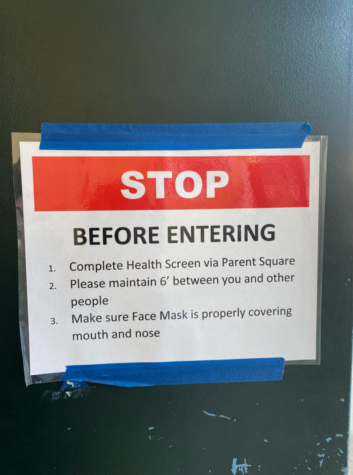
The case is different for unvaccinated individuals who may be required to quarantine (or modified quarantine, in which they may not participate in high-risk activities) depending on the location of exposure. The varying requirements curated for the safety of every kind of exposure (depending on vaccination status) are outlined and explained in this Isolation and Quarantine Guidance form.
“We’re at the point now where so many people tested positive that if we sent everybody home who potentially could have been exposed, then we would have ¾ of the school out and waiting to find out if they were positive or not,” Severin said.
Some, such as AWHS sophomore Revel Roxberry, disagree with this tactic, as students may have experienced long-term exposure to a COVID-19 positive student, increasing the likelihood for them to catch and transmit COVID-19.
“I was supposed to go to school this week [after direct exposure with someone who had COVID-19] which is ridiculous, if you’re very exposed to a friend you’re with daily you shouldn’t be allowed back,” Revel said.
Those who travel out of state or internationally are expected to test for COVID-19 four days after returning back to Marin. If students attend school within those four days prior to testing, unvaccinated students must refrain from high-risk activities like indoor sports events, but vaccinated students are free to participate.
With increased transmission, AWHS’ COVID-19 guidelines will update accordingly based on provisions made by the Marin County Public Health Department.
Your donation will support the student journalists of Archie Williams High School. Your contribution will allow us to purchase equipment and cover our annual website hosting costs. Each donation will receive a magazine subscription for a year (6 copies a year), and become a part of the important work our publication is doing.
$35 -- Subscription to the magazine
$50 -- Silver Sponsorship
$75 -- Gold Sponsorship
$100 -- Platinum Sponsorship

Corina is a senior, in her third year of journalism. You can often find her at a concert and spending time with friends. She loves Mexican food and listening...


